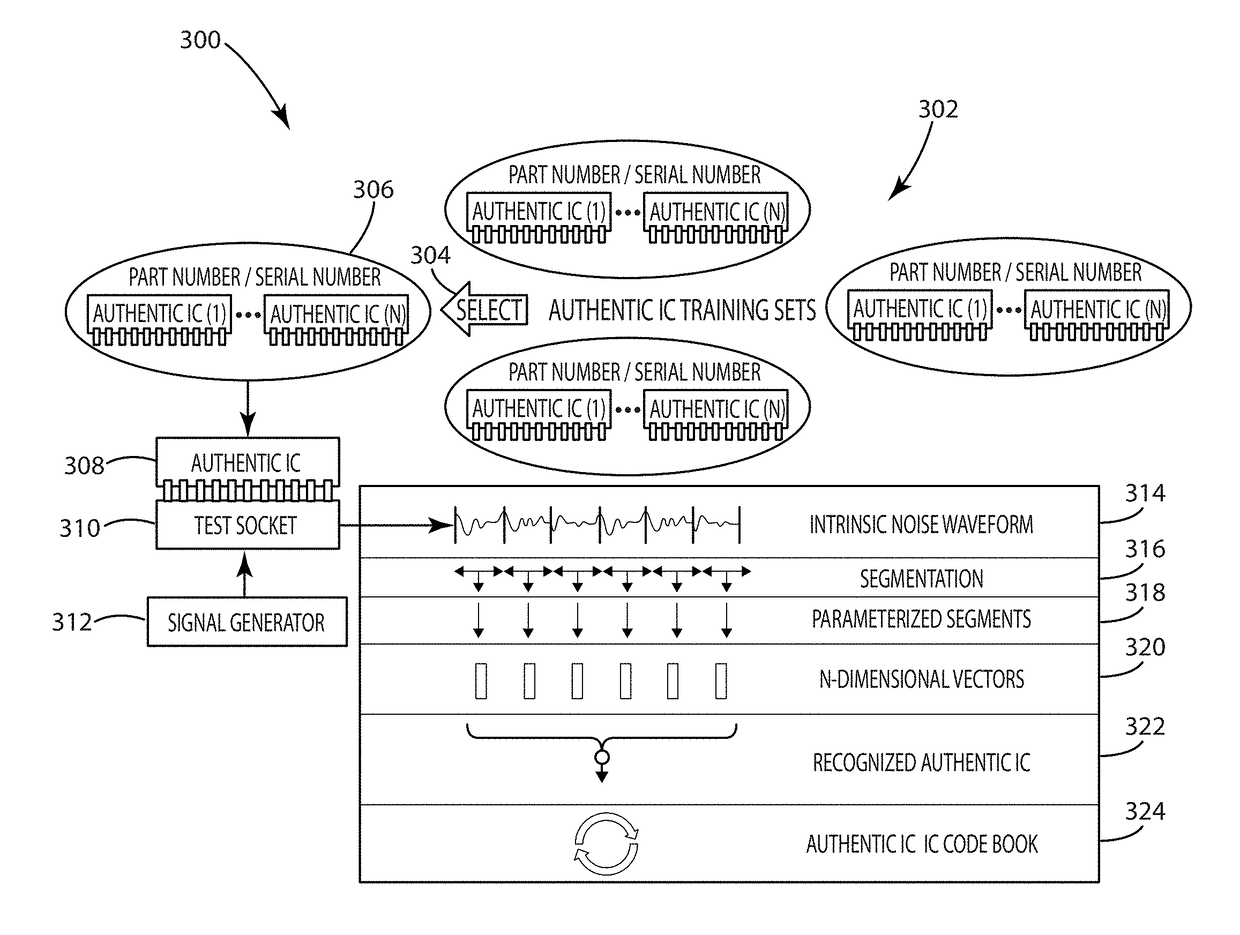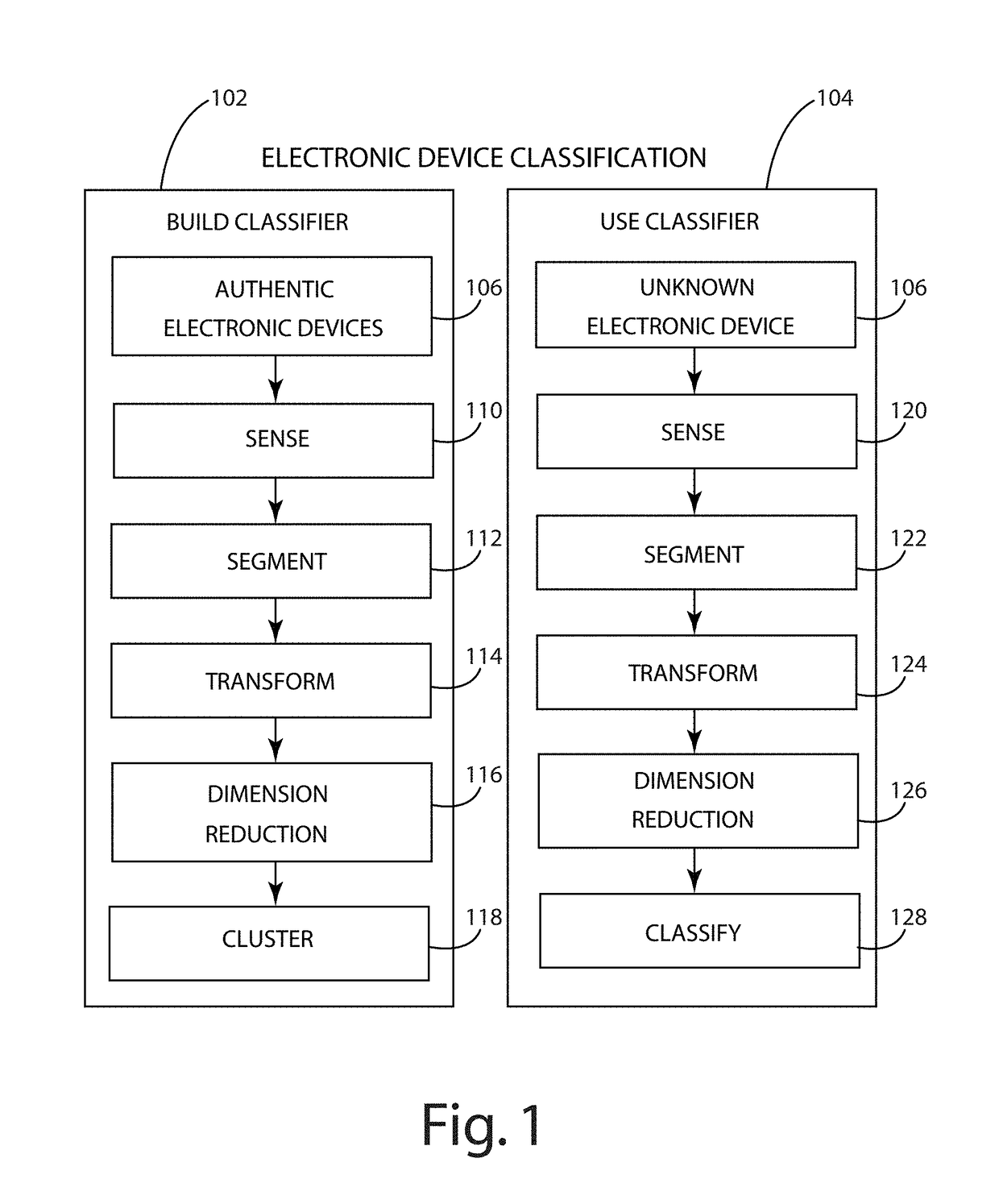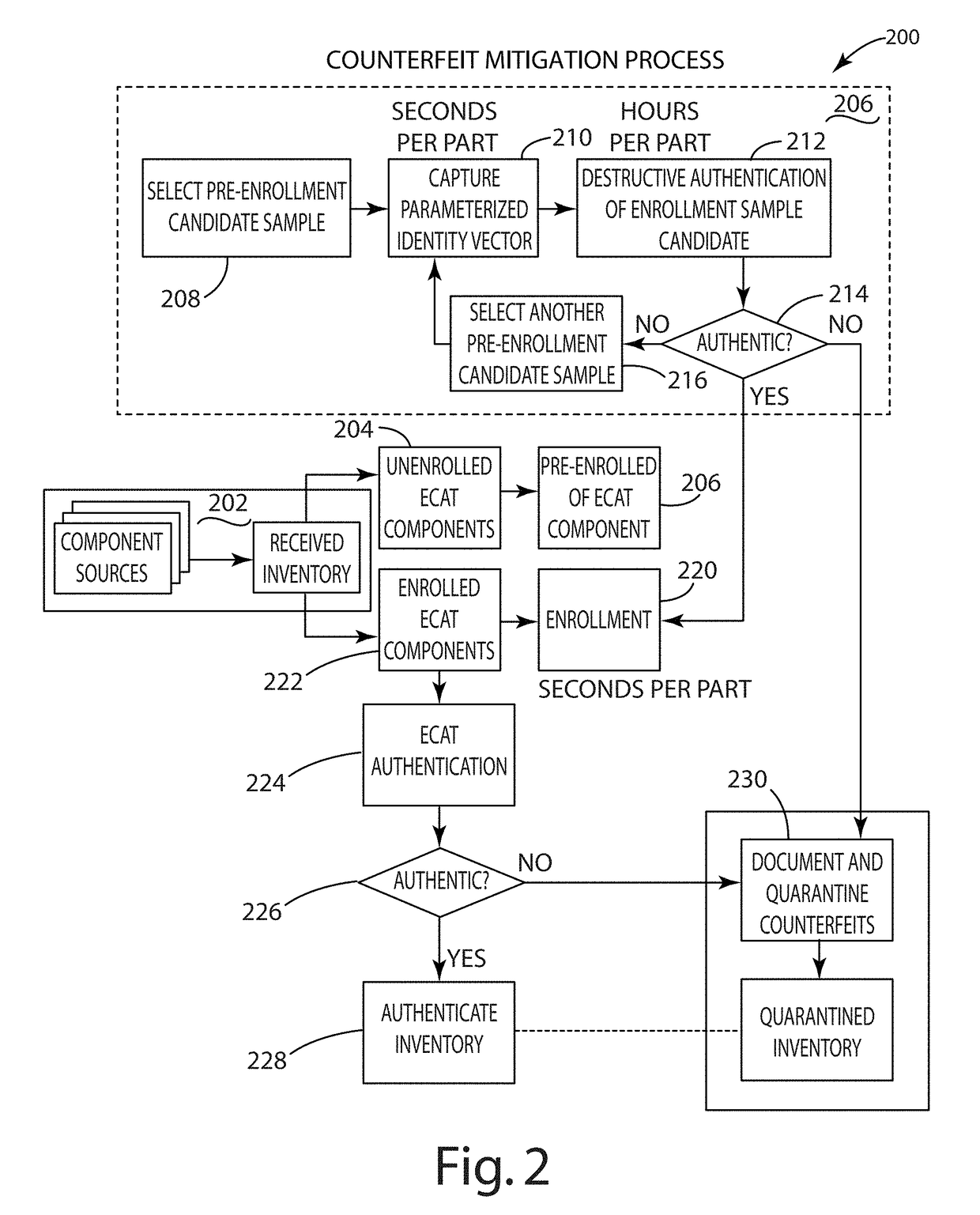Electronic component classification
a technology of electronic components and classification, applied in the field of classification or authentication of electronic components, to achieve the effect of low cos
- Summary
- Abstract
- Description
- Claims
- Application Information
AI Technical Summary
Benefits of technology
Problems solved by technology
Method used
Image
Examples
Embodiment Construction
[0056]The present invention is directed to classification of electronic components from an untrusted source. Classification may include classifying a component as authentic or counterfeit. Classification may also include classifying a component as a specific component class or an unknown class. An electronic component from an untrusted source can be classified based on the similarity or differences of its intrinsic deterministically random properties relative to the intrinsic deterministically random properties of authentic electronic components. This classification can be done non-destructively, quickly, and at a low cost.
[0057]Intrinsically random properties of components exist that are unique to each individual component. Anti-counterfeiting methods based on using these properties to tag, serialize, and track components are emerging for assuring the integrity of the supply chain from trusted sources. However, these methods do not account for components acquired from untrusted sou...
PUM
 Login to View More
Login to View More Abstract
Description
Claims
Application Information
 Login to View More
Login to View More - R&D
- Intellectual Property
- Life Sciences
- Materials
- Tech Scout
- Unparalleled Data Quality
- Higher Quality Content
- 60% Fewer Hallucinations
Browse by: Latest US Patents, China's latest patents, Technical Efficacy Thesaurus, Application Domain, Technology Topic, Popular Technical Reports.
© 2025 PatSnap. All rights reserved.Legal|Privacy policy|Modern Slavery Act Transparency Statement|Sitemap|About US| Contact US: help@patsnap.com



